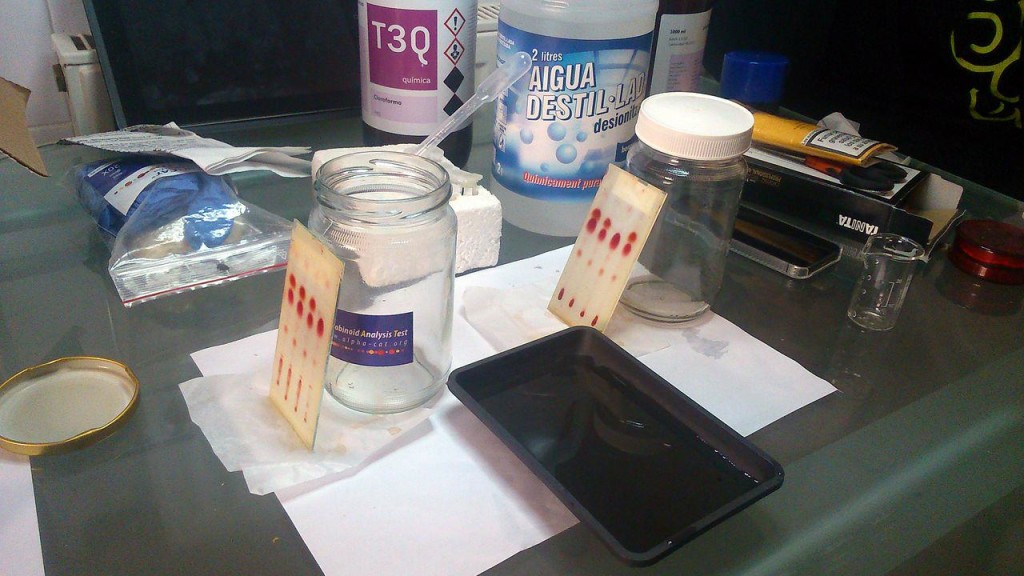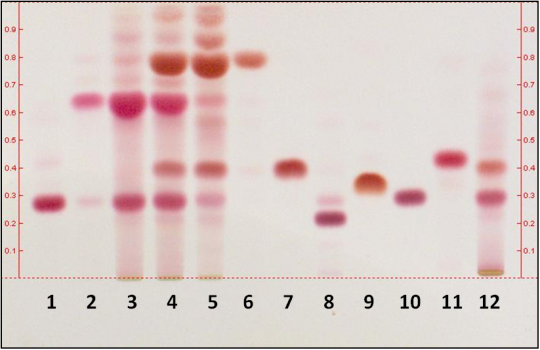interesting patent... http://www.google.com/patents/US4771005
Sounds like they're making another solid from Fast Blue, which you then add to an organic solvent to create a mix ready for TLC ....... but that's basically already the situation we're in now with adding the Fast Blue to a solvent, so im not sure what its advantages are, or if its better for us to simply leave our dye separate in the fridge(B)/freezer(BB) as they are nowReagents, test kits and methods for the detection of cannabinoids (US 4771005 A)
Abstract: The invention provides a stable solid reagent for use in a prepackaged test kit for the detection of cannabinoids comprising a diazonium salt which undergoes characteristic color change when combined with a cannabinoid under basic conditions, the salt comprising an anion capable of causing the entire salt including the diazonium cation thereof to dissolve in an organic solvent when combined therewith to form a stable liquid reagent for the detection of cannabinoids. The invention also provides a stable liquid reagent comprising the aforementioned diazonium salt and an organic solvent as well as providing prepackaged reagent test kits containing the aforementioned reagents and methods for detecting cannabinoids using the reagents of the invention.









 i mashed this together in Photoshop ...
i mashed this together in Photoshop ...




